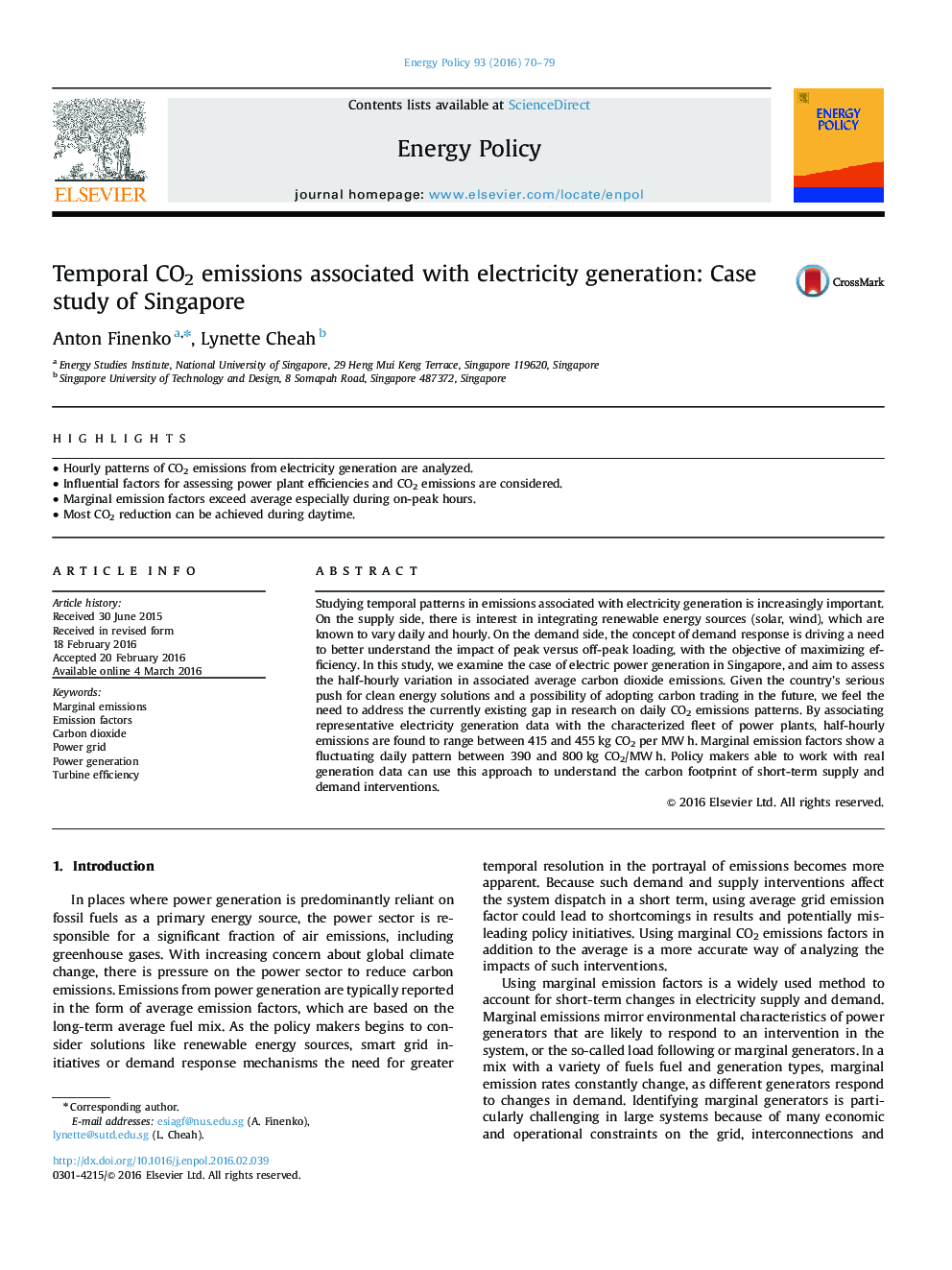| Article ID | Journal | Published Year | Pages | File Type |
|---|---|---|---|---|
| 7399287 | Energy Policy | 2016 | 10 Pages |
Abstract
Studying temporal patterns in emissions associated with electricity generation is increasingly important. On the supply side, there is interest in integrating renewable energy sources (solar, wind), which are known to vary daily and hourly. On the demand side, the concept of demand response is driving a need to better understand the impact of peak versus off-peak loading, with the objective of maximizing efficiency. In this study, we examine the case of electric power generation in Singapore, and aim to assess the half-hourly variation in associated average carbon dioxide emissions. Given the country's serious push for clean energy solutions and a possibility of adopting carbon trading in the future, we feel the need to address the currently existing gap in research on daily CO2 emissions patterns. By associating representative electricity generation data with the characterized fleet of power plants, half-hourly emissions are found to range between 415 and 455Â kg CO2 per MWÂ h. Marginal emission factors show a fluctuating daily pattern between 390 and 800Â kg CO2/MWÂ h. Policy makers able to work with real generation data can use this approach to understand the carbon footprint of short-term supply and demand interventions.
Keywords
Related Topics
Physical Sciences and Engineering
Energy
Energy Engineering and Power Technology
Authors
Anton Finenko, Lynette Cheah,
